For reasons that no longer apply, Jackie and I used to visit Geneva at least once a year. My most vivid food memories of the place revolve around the way a lot of less-formal restaurants there serve french fries: Just when you’re finishing your portion, they bring you more, fresh out of the fryer. Like a coffee refill in a diner, but so much more welcome. There’s another potato memory too, from an atmospheric if touristy restaurant in the Old Town, where I would usually order grilled schubling sausage (which always reminded me of a frankfurter) with rösti potatoes. These are kind of like hash browns: Shredded raw potatoes pressed into a disk and cooked with fat (butter is best) in a skillet. Crisp outside, melting inside, and all held together with the potatoes’ own starch (which isn’t to say that some cooks don’t add flour to help it along).
The first few times I tried to make these, decades ago, things didn’t work out all that well. I’d shred the potatoes, season them and pack them into a heated frying pan nicely slicked with butter. Well, the outside would get brown and crisp enough, but the inside tended to be dry or, even worse, undercooked. Eventually, I hit upon what I maintain is the best method.
We had some the other week to accompany doggy-bag pan-roasted loin of lamb from one of our rare restaurant meals. For the two of us, I peeled about a pound (450 g) of potatoes. Most varieties will work, but I tend to use Idaho-type russets, which have enough starch to hold the rösti together and enough moisture to enable the potatoes to steam and grow tender in the first stage of cooking. You could shred the potatoes on the large holes of a box grater, but I recommend cutting them into julienne: shreds with a square profile; the more or less uniform thickness, compared with the tapered edges of grated potatoes, minimizes the risk of burning for those of us who aren’t as attentive to our frying pans as we should be. My reliable 1980s-vintage food processor has a good julienne blade, but for three or four potatoes it’s kind of fun to do the cutting by hand.
Partly by hand, anyway: I used one of those scary-sharp Japanese mandolines to cut the potatoes into slices around 1/16 inch (1.5 mm) thick, then gathered them into little piles and used a sharp chef’s knife to cut them crosswise into strips of similar width. Perfect evenness is not crucial, but try to come close, if only for the sake of your self-respect.
Do not rinse the shredded potatoes: Their starch is crucial. And don’t bother drying them on a towel: Their water is needed too. Put them into a bowl, salt them generously and season with pepper. You could add a dry-leafed herb like rosemary, minced, but I’d save that for special occasions.
Over medium-low heat, melt 2 ounces (4 tablespoons or 60 g) butter in a frying pan whose flat cooking surface measures around 8 inches (20 cm) across. Pour most of it over the potatoes and stir well to coat all the shreds with fat; leave a nice slick of butter in the pan. Add the potatoes to the frying pan and spread them into a disk of fairly even thickness; tamp it down with a spatula and use the spatula or a spoon to tuck in any stray potato shreds around the edges.
Cover the pan. This will create a steamy environment in which the potatoes will grow tender, but it will not prevent preliminary browning from taking place. Start checking after five minutes: remove the lid and taste a potato shred for doneness. When the test shred is cooked through but not falling apart – this can take from five to eight minutes – remove the lid and continue to cook over the same medium-low heat until the underside of the rösti is brown and crisp, another six or seven minutes, perhaps, but go by appearance, not timing. Turn the rösti over, either by sliding it onto a plate or pan lid and inverting it back into the pan or by flipping it with the aid of a spatula: It should be fairly sturdy at this stage, so you’re unlikely to end up with potatoes in your hair. Cook the second side until brown and crisp, possibly adding a teaspoonful of extra butter at the edge of the pan then swirling the rösti to spread it around. Finally, give it another flip and re-crisp Side A (optional).
A perfect disk of rösti that stays crisp on the outside and is soft and very potato-y inside.
Use the same technique to make pommes Anna: don’t drizzle melted butter (or clarified butter) over successive layers of sliced potatoes, but coat the slices with fat in a bowl, then arrange them in the pan. Cook in the same way, covered until the potatoes are cooked, then uncovered to brown.
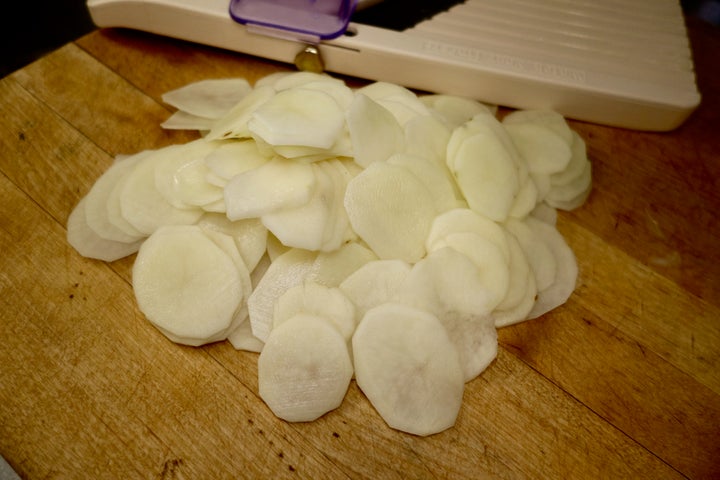
One way to julienne the potatoes is to slice them on a mandoline, then ...
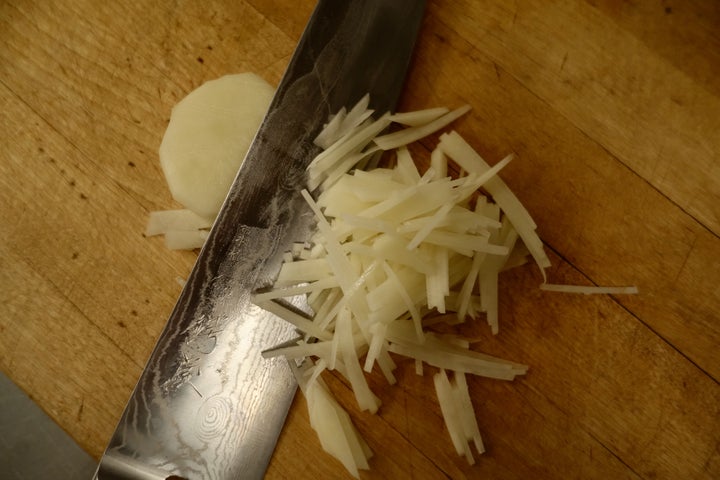
... slice them crosswise. It’s fun
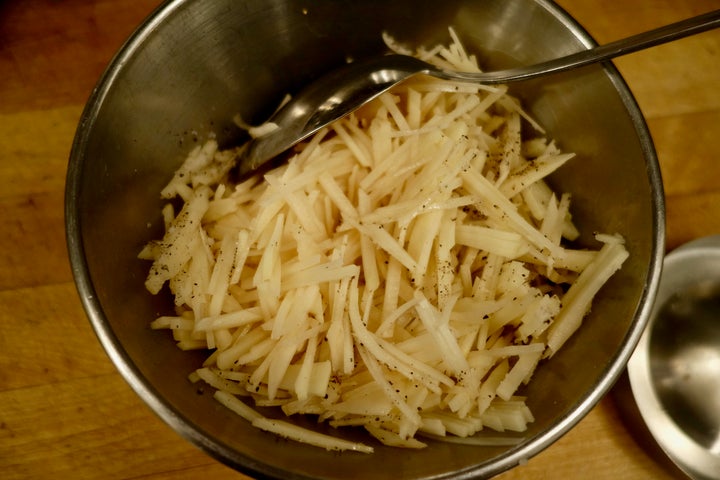
Well seasoned and coated with melted butter
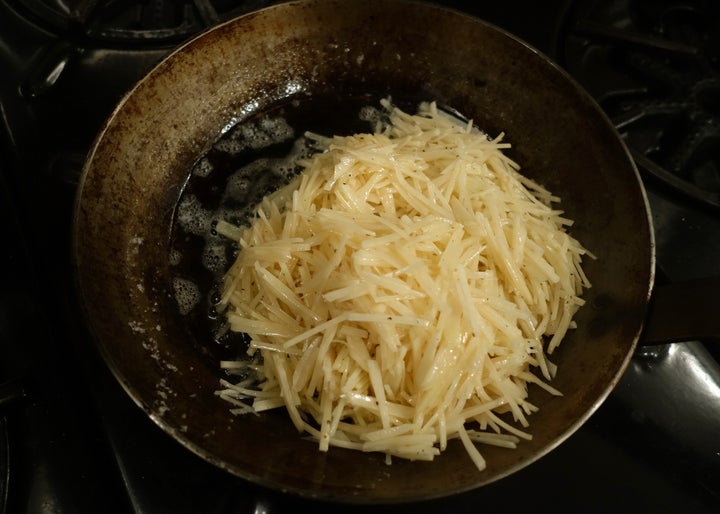
Add them to the pan in which you melted the butter, over medium-low heat
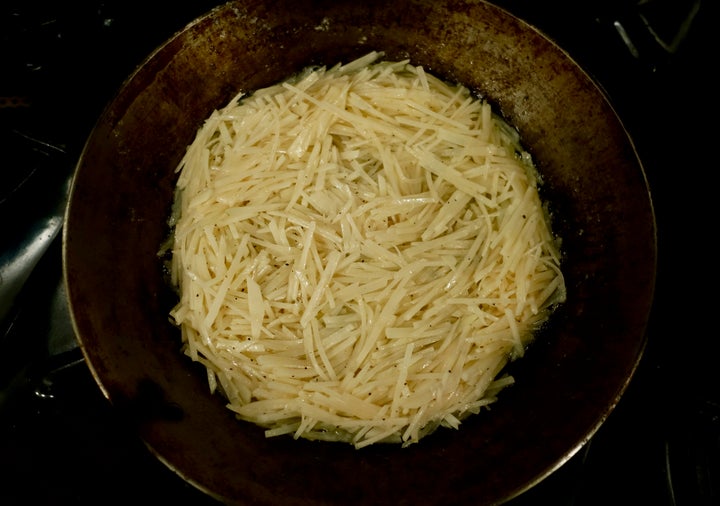
And immediately press them into a disk of fairly even thickness
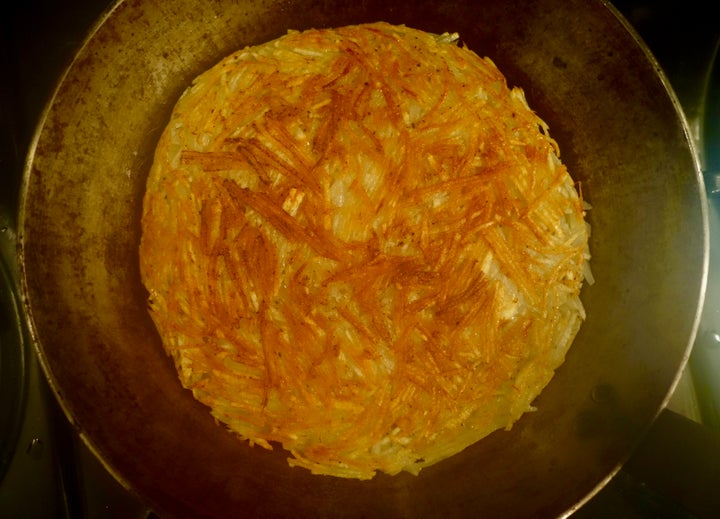
Rösti
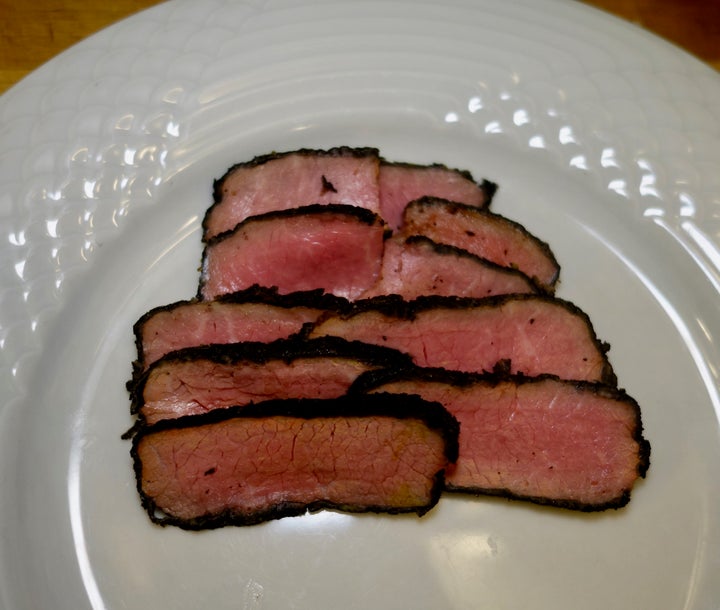
We ate the rösti with doggy-bagged lamb from the previous night’s restaurant meal